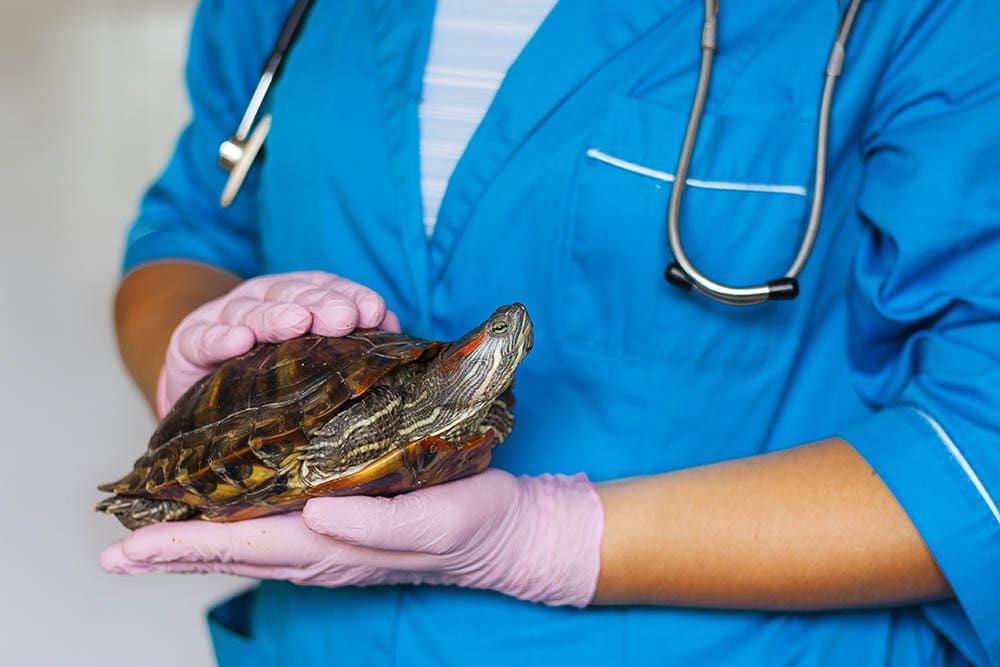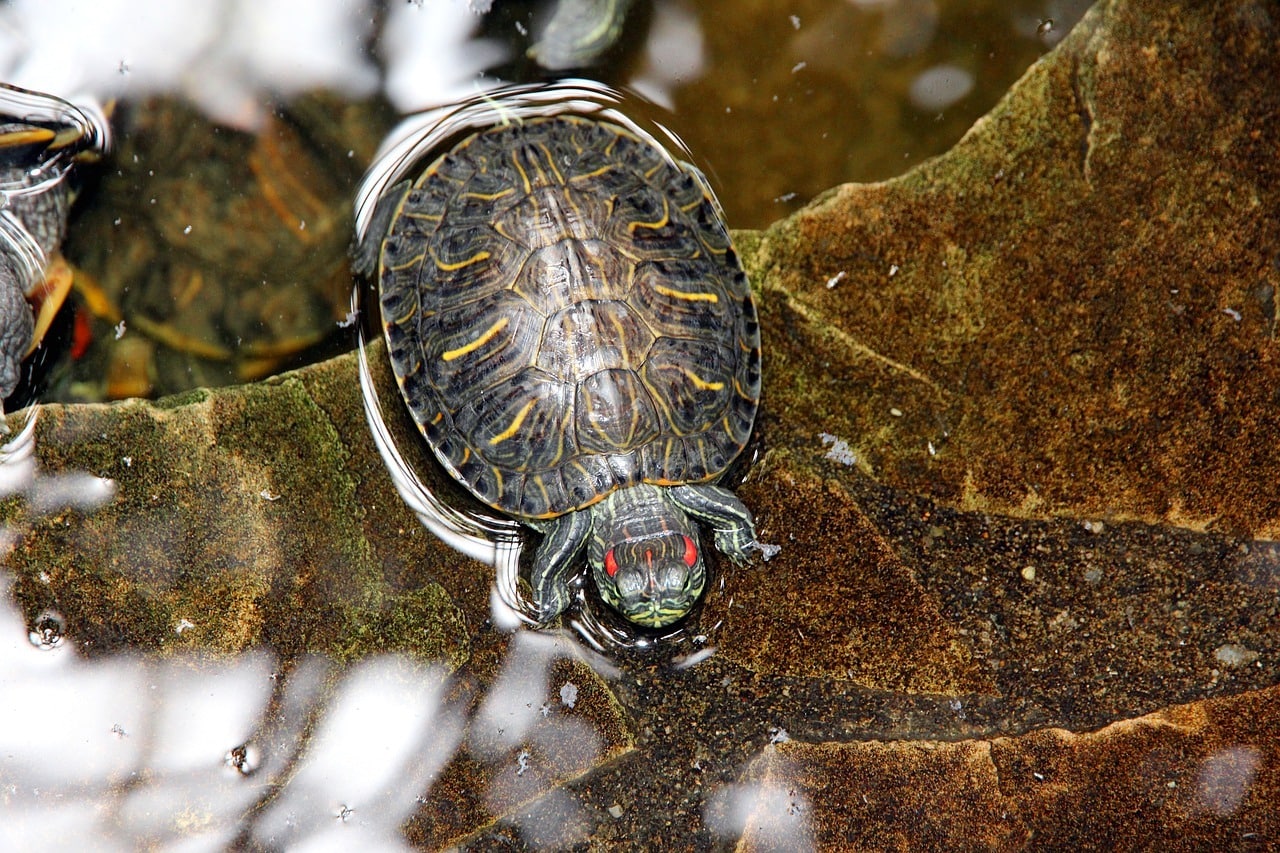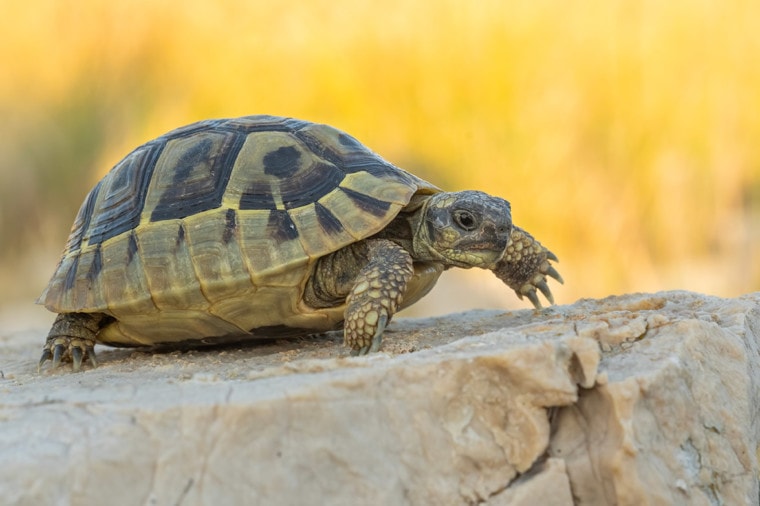
Click to Skip Ahead
If you’ve been thinking about adopting a reptile but aren’t really sure which one to pick, a tortoise might be the perfect pet for you. First, these shelled buds have an impressive lifespan and will keep you company for many decades. Secondly, they aren’t at all aggressive or stubborn and don’t need to be walked out.
Tortoises aren’t very cuddly, though, and don’t like to be held for too long. Furthermore, they rarely show any signs of affection, although they do appreciate the love and attention. So, how do you take care of this exotic pet? What kind of food does it like to eat? Which tortoise species make for the best pets? Time to find out!
What It’s Like to Own a Tortoise?

You can’t just grab a tortoise from a local environment and turn it into a pet. That’s because wild reptiles have a hard time adapting to domestic life. Instead, you should get a tortoise from a shelter or buy it from a breeder or store. On top of that, certain countries and states might be against keeping a tortoise as a pet. Check first to make sure you’re not violating any laws.
Next, tortoises have a very impressive lifespan (up to 100 years). That’s a good thing, of course, but it also means long-term financial investments. Once they grow, you will have to buy a new enclosure and spend more on fresh, premium-quality food. Large tortoise breeds eat a lot and need bigger “homes”. And let’s not forget about the electricity bills from the lighting and heating lamps!
Do Tortoises Need Veterinary Visits?
Absolutely! Regular visits to a vet clinic will help keep your shelled friend in tip-top shape. Tortoises are rather tough and rarely become ill, but they still require medical attention. So, see that there’s an experienced animal doctor in your area that specializes in tortoises. They’ll also help you decide whether hibernation is necessary for your pet or not.
Caring for a Pet Tortoise: A Detailed Guide
Before you go ahead and adopt a tortoise, it’s important to know about the ins and outs of maintenance. Tortoises aren’t the trickiest pets to take care of, but they do have certain needs. We’re talking about the enclosure, substrate, lighting, temperature, humidity levels, and, of course, food. Here’s a closer look:
Start With the Enclosure
Unlike cats and dogs, tortoises shouldn’t be allowed to roam freely outdoors, as they may fall victim to predators or run away. That’s when enclosures come in. Essentially, an enclosure is a big box where you can add substrate for the tortoise to dig into and keep it comfy with proper lighting, humidity levels, temps, food, and water.
If you adopted a baby tortoise (or a relatively small breed), opt for an indoor enclosure. Larger reptiles, however, will do better outdoors. Size plays a key role here, and there are set-in-stone recommendations for each species. As the owner, you will have to keep the enclosure clean. That means replacing the substrate and removing the pet’s droppings.
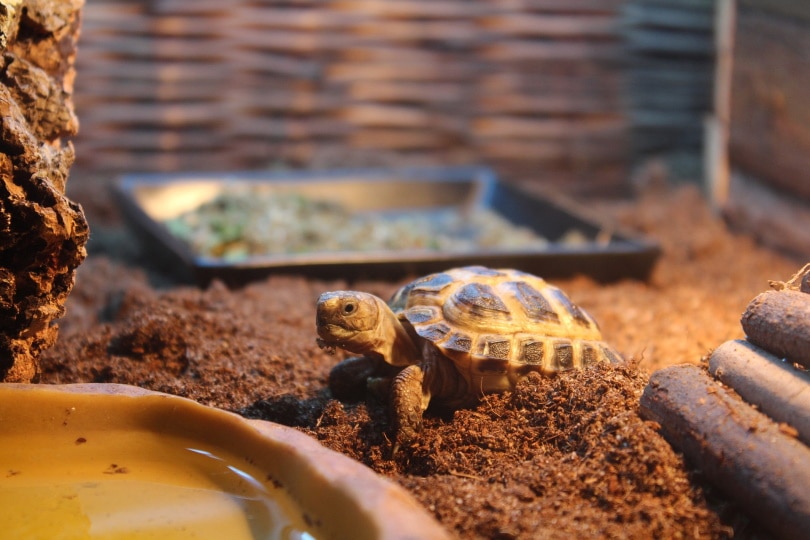
Substrate Comes Next
Most tortoises enjoy burrowing, but their preferences for the substrate tend to differ. Some shelled companions like it when the substrate has above-average water-retaining capabilities; others want it to be sandy. So, how much of it should you add? Again, it depends on the pet and ranges from two to six inches. Cage liners work as well.
Lighting and Heating
Without sunlight, tortoises have a hard time metabolizing their food and absorbing calcium, a vital mineral for their bones and shells. So, if you want to keep the pet indoors, don’t forget to install UVB and UVA generators. Don’t worry: these devices don’t cost much. And for a little bit extra, you’ll easily find a UV light that can keep the enclosure both warm and lit.
Or buy a standalone heat lamp instead. In any case, remember that one of the terrarium’s sides should be warmer than the other; otherwise, the tortoise might overheat. Should the lights and the heater be on 24/7? No, not quite: for most tortoises, 8–10 hours per day will do. Talk to a veterinarian for a more specific answer.
Taking Care of Humidity Levels
Tortoises from dry areas like below-average humidity levels. In contrast, Red-Footed pets thrive in moisturized environments. That’s why it’s recommended to use hideout boxes that are slightly more humid than the rest of the enclosure. This way, the pet will have a place to escape to and get its moisture levels up.

What Kind of Food Do Tortoises Eat?
Fresh veggies, leafy greens, fruits, and commercial pellets are the cornerstones of any tortoise’s diet. If it’s an omnivorous species, it might need more animal meat and protein. As for supplements, consult with a veterinarian before giving the pet any calcium powder or Vitamin D3. A bowl of fresh water should be available as well.
The 8 Best Tortoise Breeds to Adopt as Pets
Did you know that there are 49 tortoise species out there? That’s right, but only a select few have adapted to living in captivity. So, here’s a look at the eight best tortoise breeds for adoption, going from the largest to the smallest species. A quick note: Red-footed tortoises are the only omnivores here—the rest are herbivores:
1. Sulcata Tortoises

| Average Size | 18–30+ inches |
| Average Weight | 80–110+ pounds |
| Expected Lifespan | 30–50 years (up to 120 years) |
| Recommended Enclosure Size | 10 x 11 sq. feet |
These are the largest tortoises on the list and can easily reach over 30 inches and 110 pounds in maturity. The sheer size is a downside for many pet parents, as Sulcatas eat quite a lot and need a very large enclosure so as not to feel cramped up. On the bright side, they aren’t very needy when it comes to temps (70–100°F), humidity levels, and living conditions.
2. Leopard Tortoises
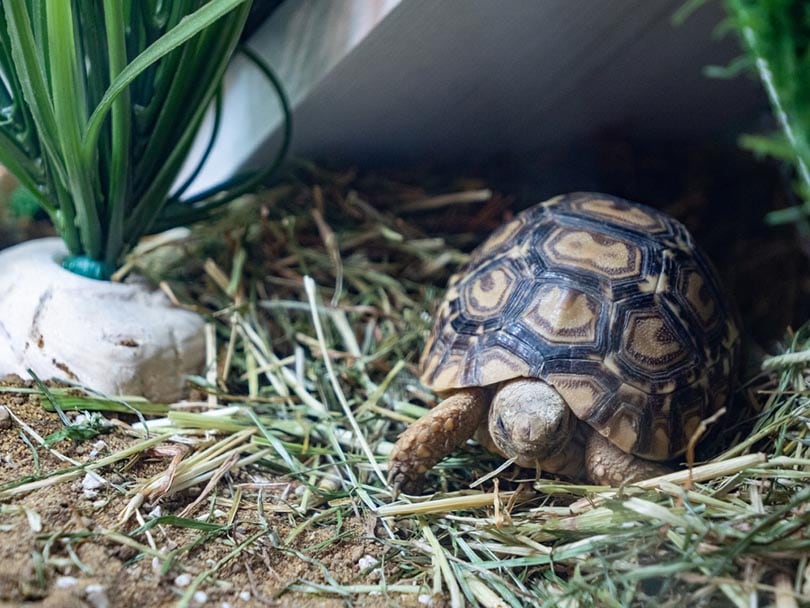
| Average Size | 14–28 inches |
| Average Weight | 30–50 pounds |
| Expected Lifespan | 50–100+ years |
| Recommended Enclosure Size | 10 x 10 sq. feet |
Just like Sulcatas, Leopard tortoises are pretty large (28 inches/50 pounds) and can live for 100 years. The beautiful pattern on the shell and the calm, docile demeanor has made these buds a popular choice. Hailing from Africa, they like a hot and dry climate (up to 90°F), water-retaining soil, and tons of substrate to dig into.
3. Red-Footed Tortoises
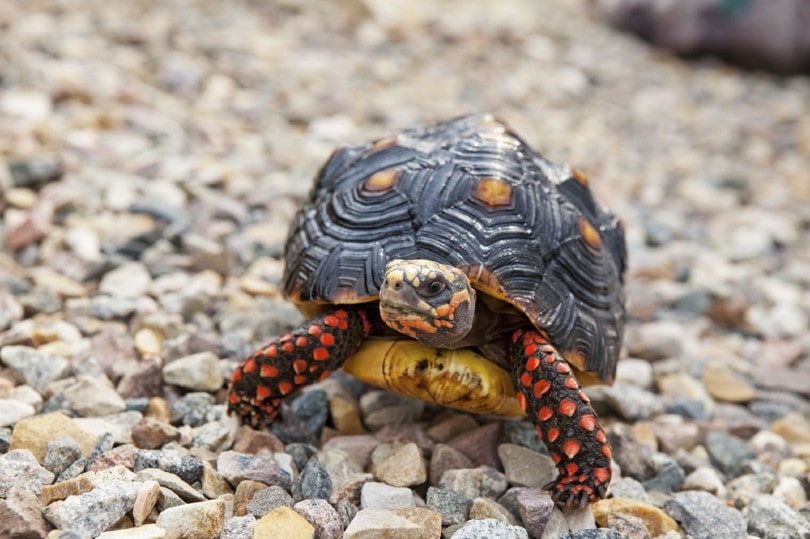
| Average Size | 12–16 inches |
| Average Weight | 20–30 pounds |
| Expected Lifespan | 25–50 years |
| Recommended Enclosure Size | 6 x 6 sq. feet |
Native to high-humidity environments, Red-footed tortoises do best in above-average levels (70–80%) and temps. You can achieve that with regular misting and by adding moisture-retaining soil into the enclosure (which should be at least 6 x 6 square feet). Lastly, these shelled champs are omnivorous and eat both plants and meat.
4. Indian Star Tortoises
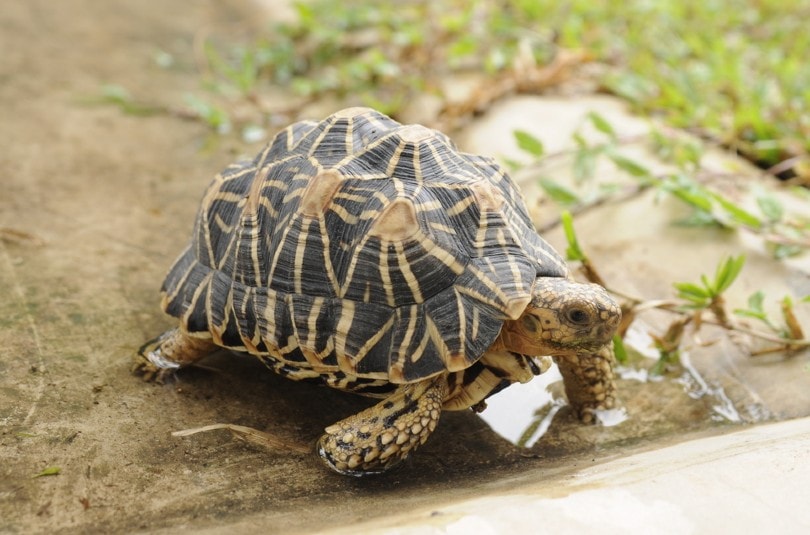
| Average Size | 8–12 inches |
| Average Weight | 10–15 pounds |
| Expected Lifespan | 35–50 years |
| Recommended Enclosure Size | 6 x 6 sq. feet |
Next up, we have yet another exotic tortoise species with a unique pattern on the back. Sadly, Indian Star tortoises are endangered, but their moderate size and (relatively) low-maintenance nature make them worth your attention. They’re not particularly aggressive and can co-exist in one enclosure (in boy-boy/girl-girl packs).
5. Greek Tortoises
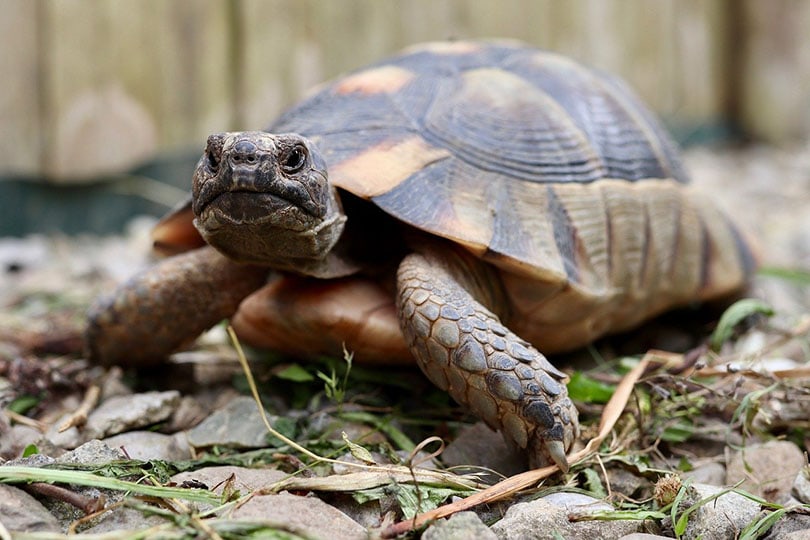
| Average Size | 8–10 inches |
| Average Weight | 2–3 pounds |
| Expected Lifespan | 100+ years |
| Recommended Enclosure Size | 3 x 6 sq. feet |
Moving on to the smaller species, Greek tortoises don’t need gigantic enclosures and will happily live in a 3 x 6 sq. feet box. Plus, when taken care of, they easily reach 100+ years of age, outliving their human owners. Feed them lots of leafy greens to make that yellow and brown shell strong and keep track of the humidity levels and temperatures.
6. Russian Tortoises
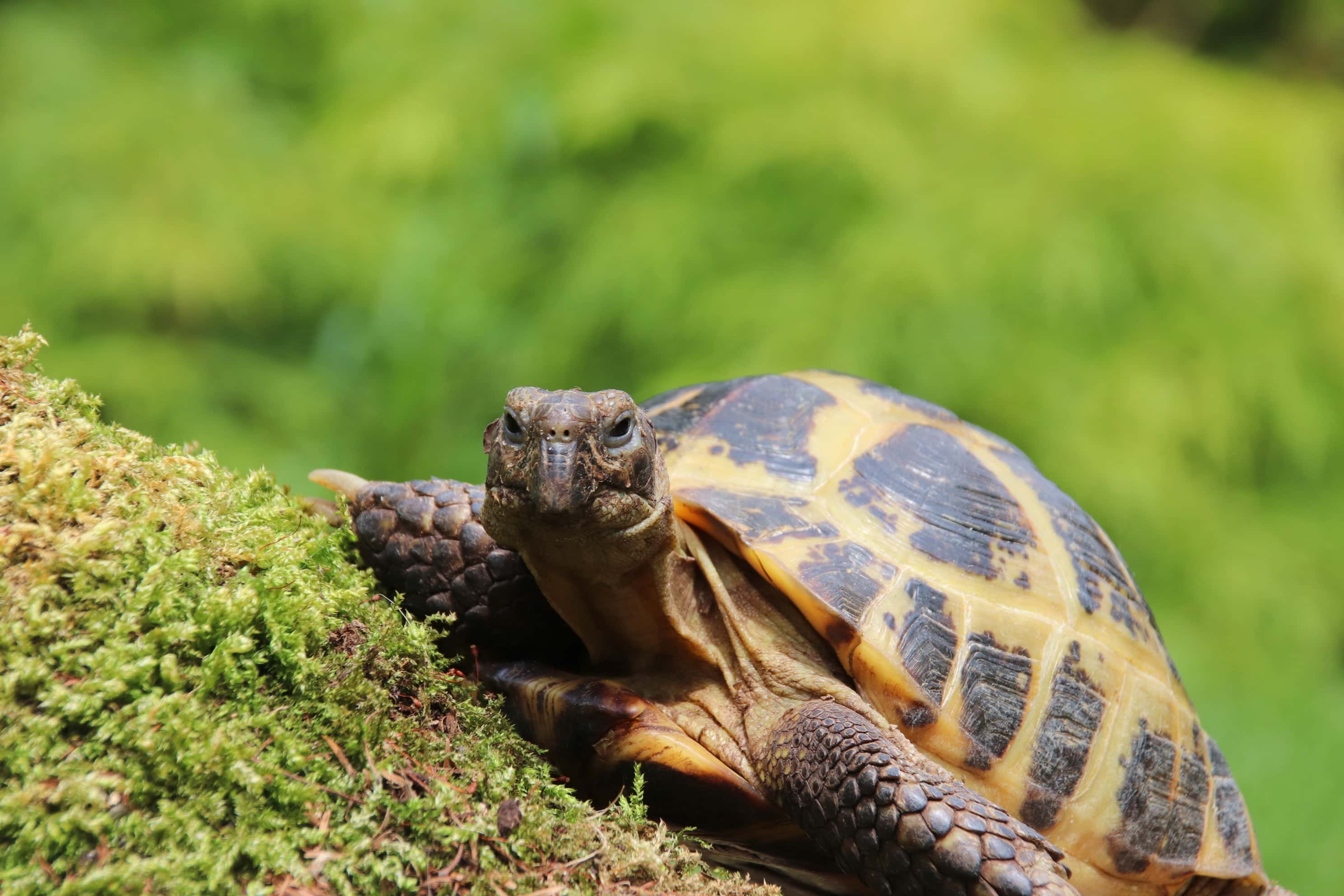
| Average Size | 7–10 inches |
| Average Weight | 1.5–4 pounds |
| Expected Lifespan | 50–100 years |
| Recommended Enclosure Size | 2 x 4 sq. feet |
These guys are big fans of digging into the ground and need substrate to feel at home. Native to deserts and grassland areas, Russian tortoises prefer it when the humidity levels stay within the norm. Recognized by their black-and-yellow pattern and active, curious nature, Russian tortoises are near-perfect pets for a reptile lover.
7. Hermann’s Tortoises
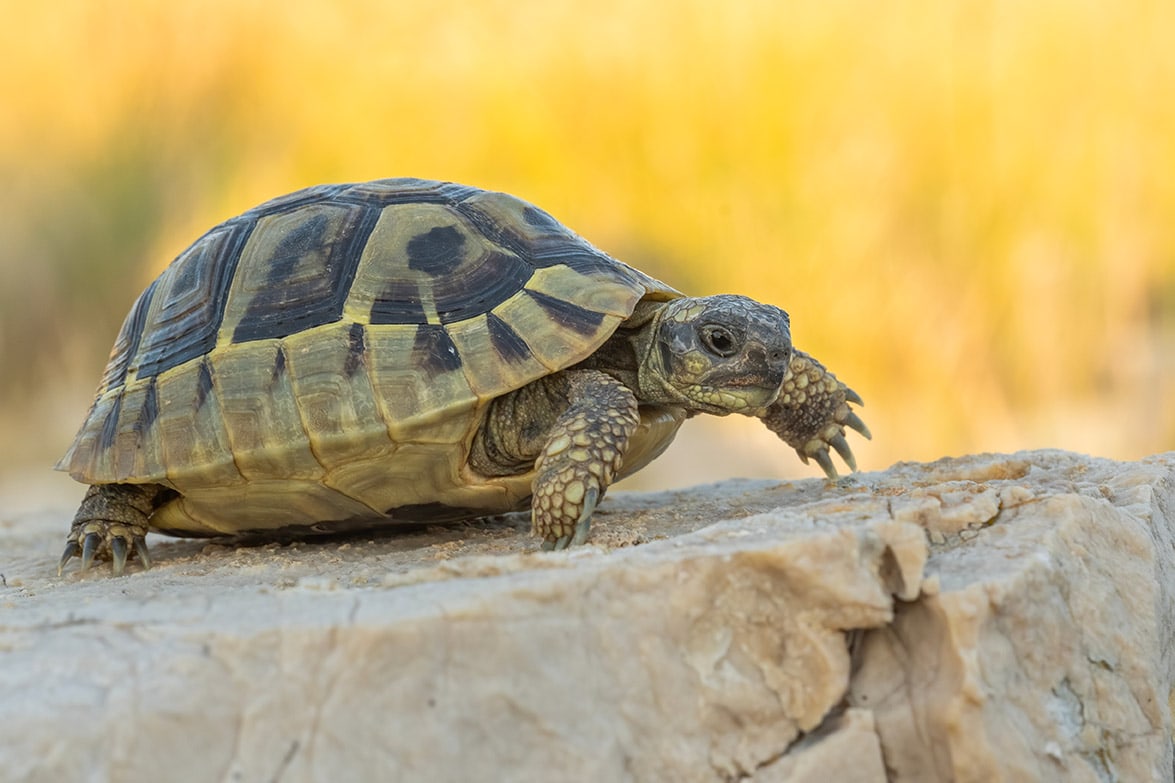
| Average Size | 6–11 inches |
| Average Weight | 7–9 pounds |
| Expected Lifespan | 70–100 years |
| Recommended Enclosure Size | 2 x 4 sq. feet |
Much like the Russian breed, Hermann’s tortoises are compact, lightweight, and like nothing more than average humidity and temperature (70–75°F). There are actually two Hermann’s species: the western and the eastern ones, and they’re both great as first-time pets. A tiny (2 x 4) enclosure and herbivore food: that’s all you’ll need to make them happy.
8. Pancake Tortoises
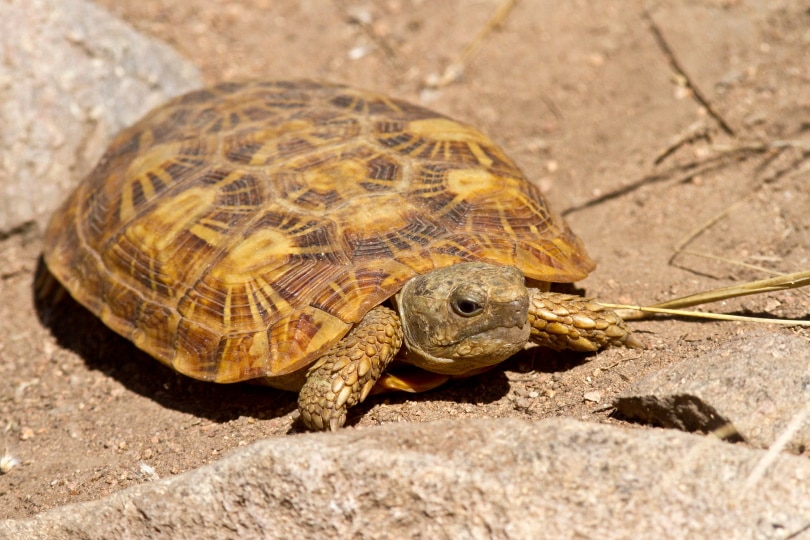
| Average Size | 5–8 inches |
| Average Weight | 1–2 pounds |
| Expected Lifespan | 35–50 years |
| Recommended Enclosure Size | 4 x 4 sq. feet |
These tortoises are incredibly tiny: even a kid can hold them in one hand. Pancakes weigh about one pound and don’t go over eight inches in size. In contrast to most tortoises, they don’t have a hard shell and rely on agility and speed to survive. So, make sure the enclosure is secure; otherwise, they might climb over and escape!
Conclusion
Tortoises aren’t as fast and fluffy as cats or as playful as dogs. They’re solitary creatures and prefer to stick to themselves. However, if you’re looking for an intelligent, peaceful pet that stays out of trouble, these buds will be an excellent choice. And while they aren’t exactly low maintenance, it doesn’t take long to learn how to raise a tortoise.
As a reward, you’ll get a lifelong companion who can bring joy and meaning into your life for more than 50 years. Tortoises are excellent pets for single owners, seniors, and families with kids. And if you already own a tortoise, use the tips from our guide to treat it like shelled royalty!
You Might Also Be Interested In:
Featured Image Credit: Suzanna Bunch, Shutterstock


